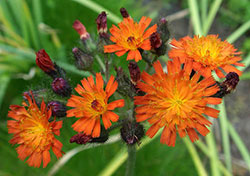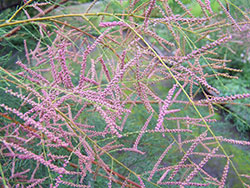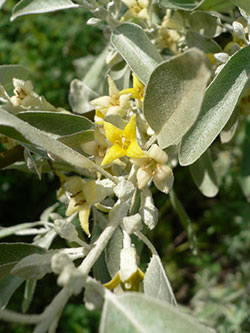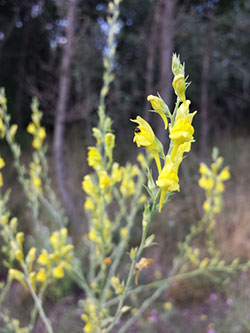
Figure 1 – Myrtle Spurge |

Figure 2 – Cypress Spurge |

Figure 3 – Orange Hawkweed |

Figure 4 – Tamarisk |
Invasive ornamental weeds, because they are so much more attractive than some of the other noxious weeds, are less likely to be seen as problematic plants. “But they are so pretty,” people cry. Perhaps, but these pretty plants are just as destructive to native ecosystems as their uglier friends.
There are at least fifteen plants on the Colorado Department of Agriculture Noxious Weed list that can be considered attractive. Four of these weeds, myrtle spurge (Euphorbia myrsinites), cypress spurge (Euphorbia cyparissias), purple loosestrife (Lythrum salicaria), and orange hawkweed (Hieracium aurantiacum) are on “List A”. This means that they have relatively small populations and must be eradicated everywhere in Colorado, including municipalities.
The remainders are “List B” weeds. These are plants whose continued spread should be stopped across the state. Some of the worst offenders on this list include tamarisk (Tamarix ramosissima) and Russian olive (Eleagnus angustifolia), trees which take over the banks of streams and rivers, depleting water courses and out competing native riparian species. Perhaps the three most problematic herbaceous plants are oxeye daisy (Chrysanthemum leucanthemum), and yellow and Dalmation toadflaxes (Linaria vulgaris, and L. genistifolia). All of these naturalize readily, crowd out native plants, and are unpalatable to livestock. Dames Rocket (Hesperis matronalis) and Oxeye Daisy (Chrysanthemum leucanthemum) are escaped ornamentals that can bloom several times over the course of a season and should be eradicated if possible. Do not purchase wildflower mixes that list any of these flowers.
If you suspect you have any of these, or other invasive ornamentals contact your local Extension Office or visit http://www.cwma.org/ to get more specific information on control and eradication of the species.

Figure 5 – Russian Olive | 
Figure 6 – Yellow Toadflax |

Figure 7 – Dalmation Toadflax |



